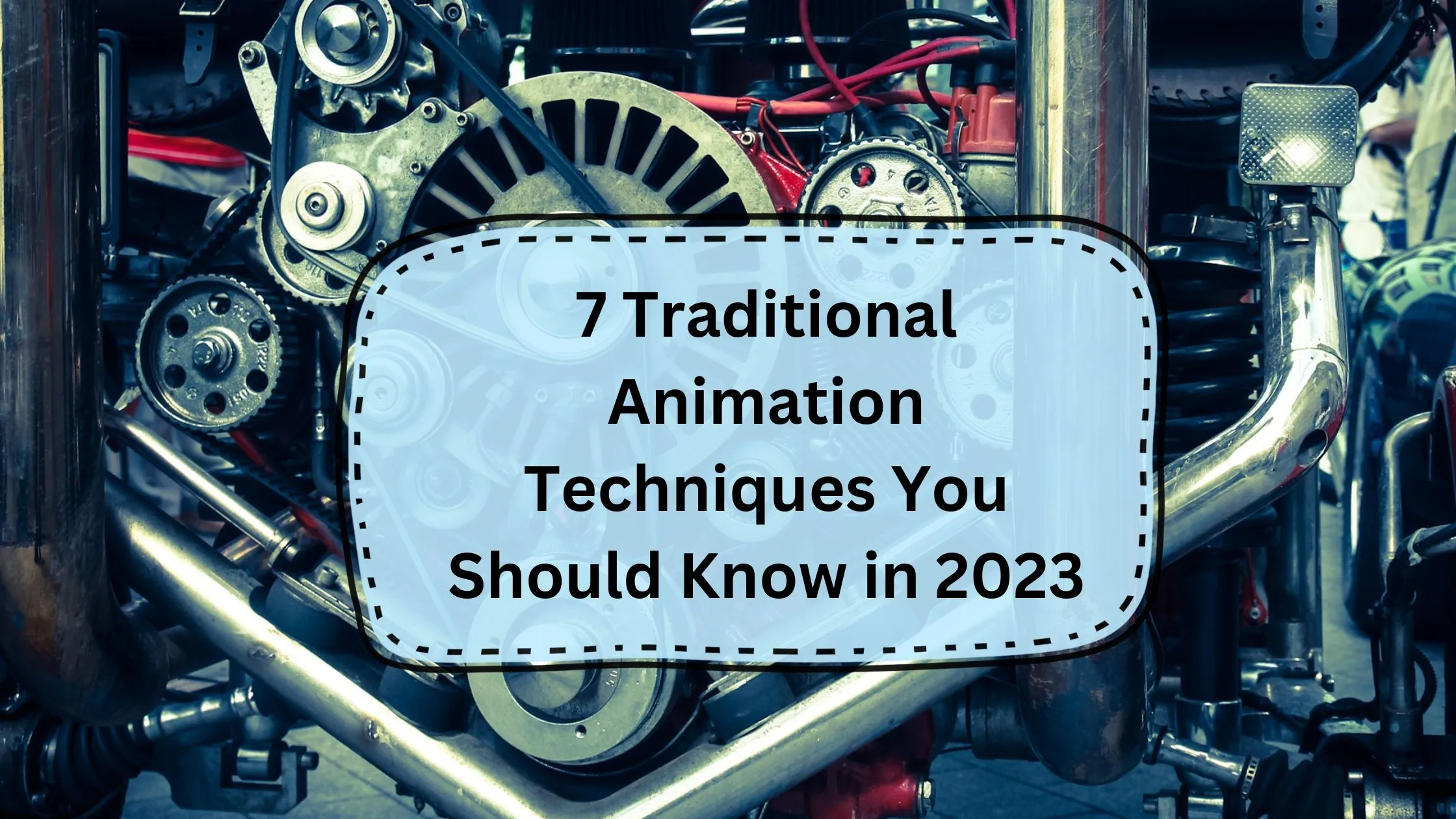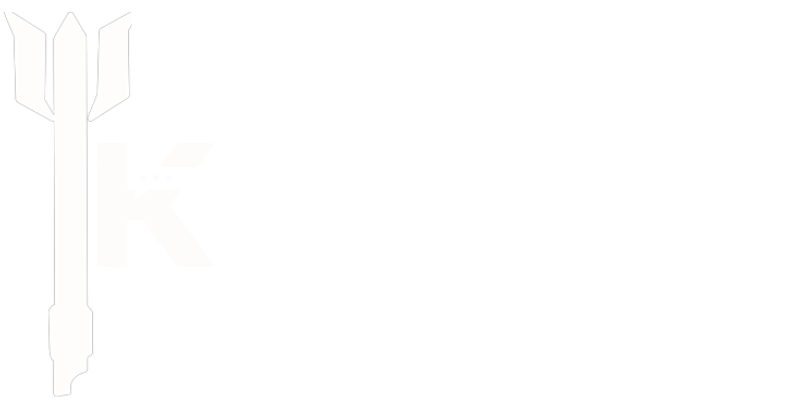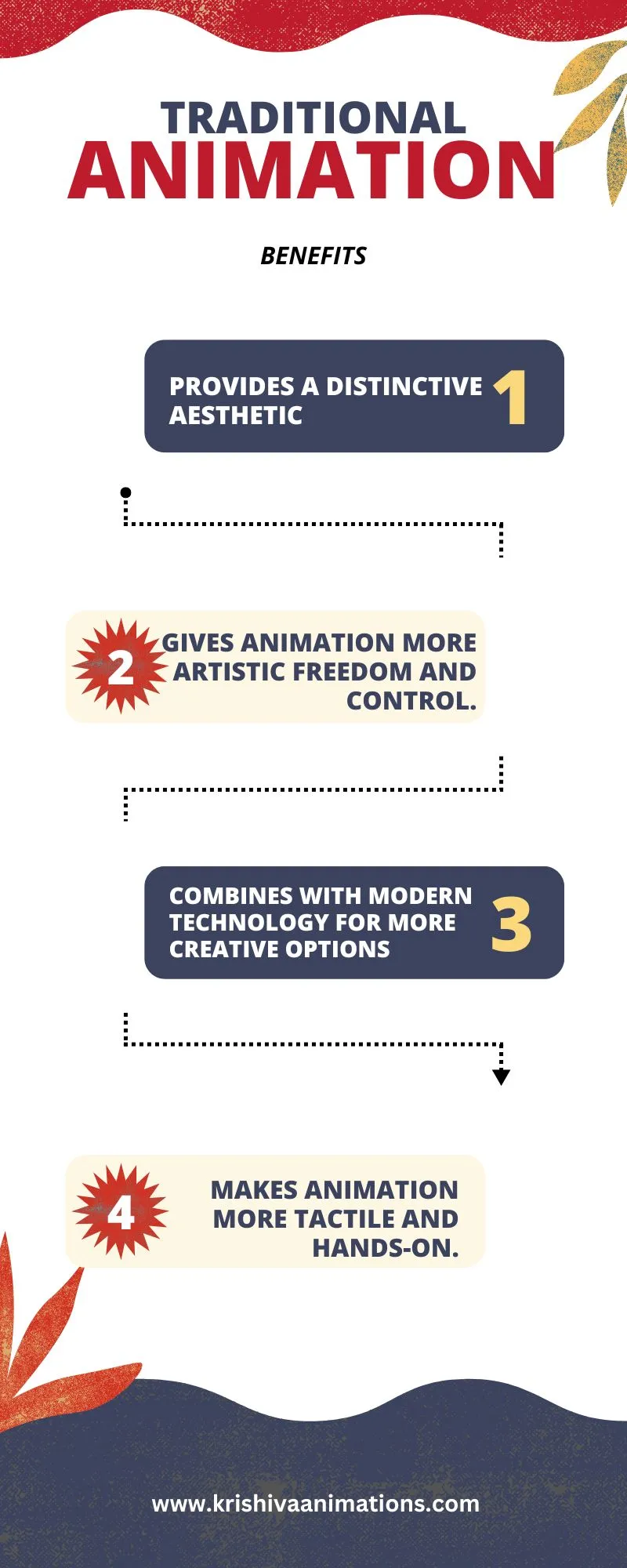
7 Traditional Animation Techniques You Should Know in 2023
7 Traditional Animation Techniques You Should Know in 2023
The oldest type of animation that has been utilised in film and television for more than a century is traditional animation, commonly referred to as cel animation. To generate the appearance of movement, a series of hand-drawn or painted images are created and then photographed one frame at a time. Some of the most well-known and enduring animated movies, such as Snow White and the Seven Dwarfs, Sleeping Beauty, and The Little Mermaid, were created using traditional animation.The degree of control traditional animation affords animators over every step of the animation process is one of its main benefits. Animation professionals can manually alter every aspect of each image to get the desired appearance because each frame is made by hand. This degree of control is crucial when developing animated characters since even minute adjustments to a character’s body language or facial emotions can have a big impact on how the audience interprets the figure.Another benefit of traditional animations is that it can have a distinctive, hand-crafted appearance and feel.Traditional animations have a warmth and charm that originate from the artist’s hand, in contrast to computer-generated animations, which can occasionally feel cold and impersonal. Also, a variety of styles and textures, from the magical and whimsical to the realistic and gritty, can be produced using classic animation techniques.Traditional animation is still a well-liked and current style of art in the twenty-first century, despite its lengthy history. Several contemporary animators still use these methods to produce beautiful and memorable animated movies, TV series, and commercials. Traditional animations is an exciting and fulfilling profession to explore, whether you’re an aspiring animator or a fan of vintage animation.
It’s simple to overlook the older styles of art and entertainment when technology continues to grow at an unparalleled rate. Nonetheless, the field of animation is one industry where traditional methods are still in demand. Despite the popularity of computer-generated animation, traditional animations is still a cherished and significant art form that employs a variety of methods and styles. It has a long history.This essay will discuss 7 fundamental traditional animations techniques that every prospective animator in 2023 has to be familiar with. We’ll go over the essential abilities and resources you’ll need to produce distinctive and captivating cartoons using conventional approaches, from the fundamentals of hand-drawn animation to more complex strategies like cel shading and rotoscoping. This tutorial will offer helpful insights and helpful suggestions to help you master the art of conventional animation, whether you’re an experienced animator trying to brush up on your abilities or a beginner to the field of animation. Now let’s get started by gathering our pencils, paper, and light tables.
Here are 7 important traditional animation techniques that every aspiring animator should know in 2023 :
- The earliest and most fundamental type of animation is hand-drawn, which entails creating a series of sketches or drawings that are then photographed and played back sequentially to give the impression of movement. As each frame must be drawn by hand, this method calls for a high level of skill and patience, but it enables a level of detail and nuance that is challenging to achieve with other techniques.
- Keyframe Animation: This method enables animators to produce a number of “key” poses or frames that specify how a character or object will move, and then fill in the blanks with additional frames to produce a fluid animation. This method is frequently combined with computer tools to speed up the animation process and produce interactions and movements that are more intricate.
- Drawing or painting each frame of an animation on a transparent sheet of celluloid (also referred to as a “cel”) and then photographing the cels in order to produce the illusion of movement is called cel animation, also referred to as traditional animations. This method has remained a popular one for producing hand-drawn animations since the early days of animation.
- Stop Motion Animation: To create the illusion of movement, a series of physical models or objects are created, photographed in order, and then slightly moved between each shot. This method is frequently employed to produce a distinct, tactile look and feel that is challenging to achieve with other animation techniques.
- Rotoscoping is the process of tracing over live-action video frame by frame to produce an animated version of the video. This method can speed up the animation of complex scenes and is frequently used to produce realistic movements and interactions.
- Cut-out animation: In this technique, characters and objects are made by cutting out shapes from paper or other materials, which are then photographed sequentially to produce an animation. This method can be used to produce 2D animations with a distinctive look and feel. It is frequently used in stop motion animation.
- The multiplane camera is a specialised camera rig that enables animators to layer numerous transparent cels on top of one another and photograph them sequentially to give the appearance of depth and movement. Disney made this method popular, and it is still used frequently in conventional animation today.
Animation professionals may produce a wide variety of captivating and enduring cartoons by mastering these classic animation techniques. These approaches offer an unmatched level of control and artistry, even if they could take more time and work than computer-generated animation.
Frequently Asked Question
Absolutely! While computer-generated animation has unquestionably grown in popularity recently, conventional animation techniques are still employed in a variety of projects, including commercials, TV shows, video games, and feature films. In fact, a lot of animators still like traditional animation’s appearance and feel because they think it delivers a level of artistry and delicacy that computer-generated animation finds challenging to match.
No, not always. While top-notch animation tools like light tables, pens, and paper can undoubtedly make the animation process simpler, animations can also be made with inexpensive materials like pencils, erasers, and plain paper. A number of free or inexpensive animation software packages are also available that may be used to produce traditional animations on a computer.
Traditional animation creation times can vary significantly based on a number of variables, such as the intricacy of the animation, the quantity of frames, and the animator’s level of expertise. Stop-motion animations, on the other hand, may frequently be finished in a matter of weeks, but hand-drawn animations, for instance, can take months or even years to create.
Absolutely! In fact, to produce intricate and visually attractive animations, a lot of contemporary animated movies and TV series combine traditional and computer-generated animation techniques. Keyframe animation, for instance, can be combined with computer software to produce movements and interactions that are more complicated, while cel animation can be scanned and digitally coloured to give it a more professional appearance.
Traditional animation methods can be learned on your own through experience and experimentation, however formal training is undoubtedly beneficial. Online lessons, discussion boards, and communities of other animators are just a few of the resources you can use to hone your abilities and create your own distinctive style. If you’re serious about pursuing a career in animation, though, formal training can also offer useful insights and chances to interact alongside accomplished animators.
Conclusion
In conclusion, conventional animation methods will still play a significant role in the animation sector in 2023. While computer-generated animation has unquestionably grown in popularity recently, traditional methods like hand-drawn animation, cel animation, and stop-motion animation are still employed in a variety of projects, including commercials, video games, and television shows in addition to feature films and TV shows.
Animation artists may produce captivating and enduring animations by mastering these time-honored approaches. From the tactile and intricate appearance of stop-motion animation to the glossy and opulent appearance of cel animation, each approach has its own special advantages and difficulties.
Traditional animation methods offer an unmatched level of control and artistry, even if they may take more time and work than computer-generated animation. Animation artists may produce intricate and visually spectacular animations that push the boundaries of what is possible by fusing these approaches with contemporary hardware and software.
In conclusion, while traditional animation methods may be dated, they are nevertheless very much in use today. Mastering these methods is essential for prospective animators who want to stand out in the field.

